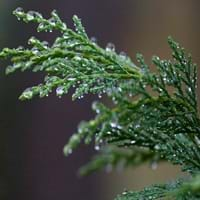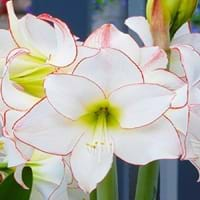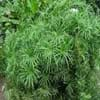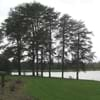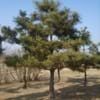Life Span
Perennial
Perennial
Type
Needled or Scaled Evergreen
Bulb or Corm or Tuber
Origin
Hybrid origin
Hybrid origin
Types
not available
Not Available
Habitat
All sorts of environments, Alpine Meadows, High elevation, Hilly upland habitat
tropical environments
USDA Hardiness Zone
6-9
8-11
AHS Heat Zone
9-3
Not Available
Sunset Zone
3b, 4, 5, 6, 7, 8, 9, 10, 11, 12, 13, 14, 15, 16, 17, 18, 19, 20, 21, 22, 23, 24
21,22
Habit
Pyramidal
Clump-Forming
Flower Color
Non Flowering Plant
White, Red, Light Pink
Flower Color Modifier
Bicolor
Bicolor
Fruit Color
Brown
Green, Brown
Leaf Color in Spring
Green, Blue Green, Gray Green
Green, Dark Green
Leaf Color in Summer
Green, Blue Green, Gray Green
Light Green
Leaf Color in Fall
Green, Blue Green, Gray Green
Several shades of Green
Leaf Color in Winter
Green, Blue Green, Gray Green
Light Green
Leaf Shape
needle shaped
Long Linear
Plant Season
Spring, Summer, Fall, Winter
Spring, Summer, Winter
Sunlight
Full Sun
Full Sun, Partial Sun
Type of Soil
Clay, Loam
Loam, Sand
The pH of Soil
Acidic, Neutral, Alkaline
Acidic, Neutral
Soil Drainage
Well drained
Well drained
Bloom Time
All year
Not Available
Tolerances
Cold climate, Deer resistant
Deer resistant
Where to Plant?
Ground
Container, Ground, Pot
How to Plant?
Hardwood Cuttings, Transplanting
Divison, From Rhizomes, Tubers
Plant Maintenance
Medium
Low
Watering Requirements
Average Water Needs
Average Water Needs
In Summer
Lots of watering
Lots of watering
In Spring
Moderate
Moderate
In Winter
Average Water
Average Water
Soil pH
Acidic, Neutral, Alkaline
Acidic, Neutral
Soil Type
Clay, Loam
Loam, Sand
Soil Drainage Capacity
Well drained
Well drained
Sun Exposure
Full Sun
Full Sun, Partial Sun
Pruning
Prune for size control, Prune if you want to improve plant shape, pruning needed for strong structure, Remove damaged leaves, Remove dead branches, Remove dead leaves
Cut or pinch the stems, Remove damaged leaves, Remove dead branches, Remove dead leaves
Fertilizers
All-Purpose Liquid Fertilizer, slow-release fertilizers
as it is a flowering plant, use high phosphorous content fertilizer, Nitrogen, Phosphorous, Potassium, Requires high amount of nitrogen
Pests and Diseases
Canker, Root rot, Stigmina needle blight
Aphids, Grasshoppers, Mealybugs, Mites, Red blotch, Slugs, Snails
Plant Tolerance
Cold climate, Deer resistant
Deer resistant
Flower Petal Number
Single
Not Available
Edible Fruit
No
Not Available
Fragrant Flower
No
Not Available
Foliage Texture
Fine
Medium
Foliage Sheen
Matte
Glossy
Attracts
Birds
Bees, Butterflies, Hummingbirds
Allergy
Unknown
poisonous if ingested
Aesthetic Uses
Formal Garden, Ornamental use, Showy Purposes, Woodland margins
Beautification, Bouquets, Cottage Garden, Showy Purposes
Beauty Benefits
Not Available
Not Available
Environmental Uses
Air purification
Not Available
Medicinal Uses
No Medicinal Use
Not Available
Part of Plant Used
Not Available
Flowers
Other Uses
Acts as a natural source of rain water for birds and insects., deer resistant, Used as Christmas Tree
Used as Ornamental plant, Used for bedding in gardens
Used As Indoor Plant
No
Yes
Used As Outdoor Plant
Yes
Yes
Garden Design
Feature Plant, Hedges, Mixed Border, Screening, Wind Break
Container, Cutflower, Houseplant, Mixed Border, Tropical
Botanical Name
X CUPRESSOCYPARIS leylandii
HIPPEASTRUM 'Picotee'
Common Name
Leylandii
Florist Amaryllis, Hippeastrum, Picotee Hippeastrum
In Hindi
Leyland cypress
HIPPEASTRUM
In German
Leyland-Zypresse
HIPPEASTRUM
In French
Cyprès de Leyland
HIPPEASTRUM
In Spanish
Cupressus leylandii
Hippeastrum
In Greek
Leyland Cypress
Hippeastrum
In Portuguese
Cipreste-de-leyland
HIPPEASTRUM
In Polish
Cyprysowiec Leylanda
Hippeastrum
In Latin
Leyland Cypress
Hippeastrum
Phylum
Coniferophyta
Magnoliophyta
Class
Pinopsida
Magnoliopsida
Order
Pinales
Asparagales
Family
Cupressaceae
Amaryllidaceae
Genus
Cupressus
Amaryllis
Clade
Not Available
Angiosperms, Monocots
Tribe
Not Available
Not Available
Subfamily
Not Available
Amaryllidoideae
Number of Species
Not Available
Importance of Leyland Cypress and Hippeastrum
Want to have the most appropriate plant for your garden? You might want to know the importance of Leyland Cypress and Hippeastrum. Basically, these two plants vary in many aspects. Compare Leyland Cypress and Hippeastrum as they differ in many characteristics such as their life, care, benefits, facts, etc. Every gardener must at least have the slightest clue about the plants he wants to plant in his garden. Compare their benefits, which differ in many ways like facts and uses. The medicinal use of Leyland Cypress is No Medicinal Use whereas of Hippeastrum is Not Available. Leyland Cypress has beauty benefits as follows: Not Available while Hippeastrum has beauty benefits as follows: Not Available.
Compare Facts of Leyland Cypress vs Hippeastrum
How to choose the best garden plant for your garden depending upon its facts? Here garden plant comparison will help you to solve this query. Compare the facts of Leyland Cypress vs Hippeastrum and know which one to choose. As garden plants have benefits and other uses, allergy is also a major drawback of plants for some people. Allergic reactions of Leyland Cypress are Unknown whereas of Hippeastrum have poisonous if ingested respectively. Having a fruit bearing plant in your garden can be a plus point of your garden. Leyland Cypress has no showy fruits and Hippeastrum has no showy fruits. Also Leyland Cypress is not flowering and Hippeastrum is not flowering . You can compare Leyland Cypress and Hippeastrum facts and facts of other plants too.
